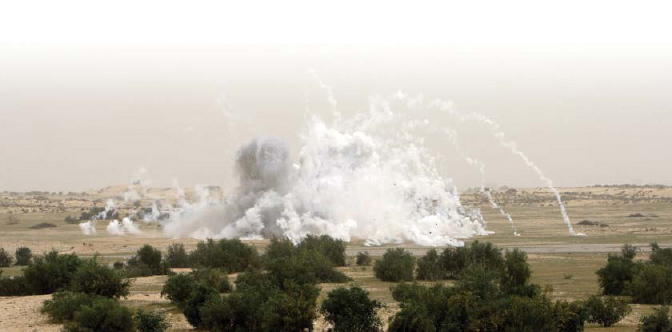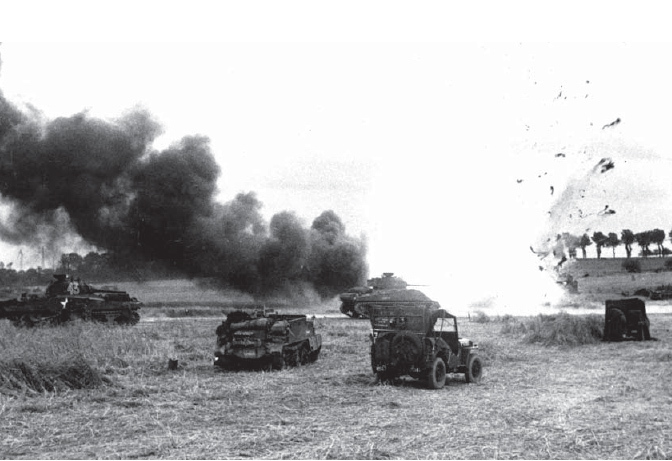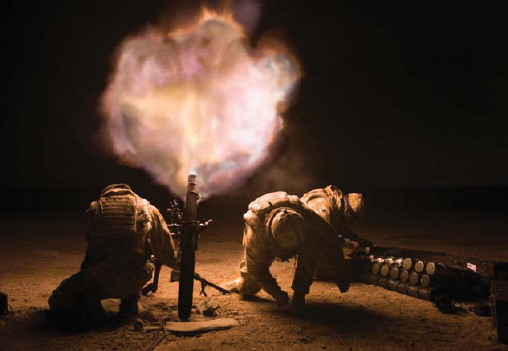Poison gas is quite difficult to make and even more difficult to place where it is wanted. It can be fired in shells or released from canisters but it is always difficult to be sure where the wind will blow it and how long it will remain sufficiently concentrated to be effective. The reason it is not used is that it is less effective than explosives or phosphorous in a conventional military or counter-insurgency situation.
Napalm strike
Napalm is a mixture of petrol – gasoline for my colonial friends – and another substance about which I am not going to educate the amateur terrorist. The effect of the addition to the gasoline is to turn it into a sticky jelly which retains its burning ability yet does not evaporate quickly and can be spread around the target. If you come across this useful but unpleasant substance it will be a case of ‘the biter bit’ as it was popularized by US forces in Vietnam. Older folks will remember the pictures of the poor little girl running towards the camera with lots of skin burnt off by napalm. I’m glad she’s ok now.
Napalm can be put into bottles and thrown but more usually it is put into aircraft auxiliary fuel tanks and dropped onto targets. Generally by our side. My only point in mentioning napalm is to tell you how to deal with it in the unlikely event you are at the receiving end. You may come across it in a riot situation or when your vehicle breaks down in a town and a crowd gathers. Water is no good and a blanket is not much better. A chemical fire extinguisher of the powder or foam type is about the best bet if you have one handy. Vehicle-mounted extinguishers are a comfort in times of need.
Phosphorous
Phosphorous is a chemical which self-ignites and burns in air at a high temperature. You may have come across it as phosphorus grenades which are designated ‘white smoke’ allegedly for signalling. Our tanks have white smoke rounds also for signalling.... Yeah right.

UN sappers neutralize unexploded white phosphorous munitions in the southern Gaza Strip. Over 84 white phosphorous shells which did not explode had to be destroyed following Israel’s three-week war in Gaza. The Israeli Army was doing a lot of signalling... (Corbis)
What it is really used for is clearing trenches and bunkers because when the grenade or shell goes off with a soft pop a cloud of white smoke appears and lots of little bits of phosphorous come flying through it. Whatever the bits touch they set fire to and if they land on your skin they will burn through until they drop out the other side. The white smoke, so good for signalling, also burns the lungs of anyone who breathes it so as a handy by-product it can be used to clear out bunkers more effectively than fragmentation grenades. When the blind choking creatures come out it is a kindness to shoot them. US artillery now have combination high-explosive and phosphorus shells which the gunners refer to as ‘shake and bake’. Military humour hey?
Anthrax
Biological weapons are things such as anthrax spores – bugs which start up infectious diseases. They are surprisingly difficult to make, to keep alive in transit and to deliver to the target. You may be aware that delivery by mail was tried with anthrax in the USA a few years ago and it did catch one or two people. If it can be done efficiently, disease spores such as anthrax make a terrifying weapons spreading panic across a city in hours. There is nothing to see and no one knows where they are or who has caught the disease. Nasty.
Anthrax comes in three flavours: you can get one type through a cut, another through eating infected meat and the third and most frightening, through breathing the spores. The symptoms start with fever and vomiting blood but it makes little odds as you are dead in 2 days as a rule. Sometimes it takes 60 days for the symptoms to show and sometimes less than 7 days. Imagine the effect of a news story where the people of a major city thought anthrax spores had been released. Hundreds of thousands of people would be potential victims and swamp the health services. The city would have to be sealed off and somehow decontaminated. A nightmare really. As a solider you are far more likely to act as security detail in a city with an anthrax scare than to come across it as an actual weapon.
MORTARS AND HOW THEY ARE USED
It might seem counter to common sense but the biggest effect the terrorist artillery – and that is usually a mortar – is going to have on you, if you are following your SOPs, is to wake you up now and again. This is because in the sort of counter-insurgency warfare you are likely to be engaged in the enemy cannot use artillery or mortars efficiently – with aimed barrage fire – and all you need to defend against the individual mortar bombs they can throw at you is a hole close by.
Let me explain: properly set up artillery and mortars are arranged in batteries of three or four units and targeted in such a way that they rain down a terrific barrage of explosive projectiles onto a precise area for a couple of seconds – and kill everything in the area above ground. The correct response to this, apart from being in a deep hole, is to have some of your own radar-guided artillery set up to reply immediately onto the attacker’s firing position. This is why so much modern artillery is designed to fire a few rounds then drive away before they get blatted. Fortunately, terrorists cannot use artillery or mortar fire against you properly because it would be vulnerable to our excellent air assets and counter-battery artillery.
Because of our side’s potential for counter-battery fire, the best the terrorist can do is loose off the odd mortar bomb roughly in the direction of your hut and then try to get away before our radar tracks the bomb back to its source and replies with devastating results. So all you are likely to get coming at you is the odd mortar round. One or two at a time.
You will notice that all our main camps in unstable countries are spread out as much as possible so you have to be very unlucky to be hit by a random mortar bomb. In any event, the SOP is this: when in camp, make sure there are sufficient holes by all buildings and areas where soldiers gather so they can jump in when they are told or hear mortars fire. For your part, if you are a buckshee, don’t argue or waste time, just get in that hole when you are told. That is all you need to do to stay alive.

An ammunition lorry, caught in the open, is hit by enemy mortar fire in Normandy, 25 June 1944. Mortar fire can be just as effective today. (Cody)

British soldiers are pictured firing flares from a 81mm mortar to illuminate enemy positions outside Basra, Iraq. (Allan House © UK Crown Copyright, 2006, MOD)
The only time mortars can be a problem to you is if someone spots you on patrol out in the sticks and has a pop at you with their mortar. Remember they don’t usually have the skills or equipment to produce a concentrated fire and a beaten zone – the kill area – so, again, you are going to have just one or two mortars shells coming down in your part of the world. You will hear the thud as the propellant fires the shell up into the air and then you will have some seconds before the shell comes back down again. Find a hollow if you can. Failing this just hit the ground near a big rock or wall and that halves the chances of you being hit straight away. Even in the open, so long as you are close to the ground, a mortar has to come very close to do you any damage. And while that is happening your very cross patrol commander is going to be calling in fire on the enemy mortar team. They have to be line of sight to hope to hit you and pretty easy to spot gathered around an 82mm mortar so if you have a drone up, or a chopper or even a sniper on a hill they are dead meat.